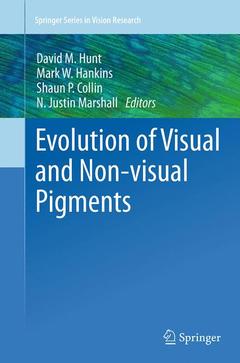Description
Evolution of Visual and Non-visual Pigments, Softcover reprint of the original 1st ed. 2014
Springer Series in Vision Research Series, Vol. 4
Coordinators: Hunt David M., Hankins Mark W., Collin Shaun P, Marshall N. Justin
Language: English
Subjects for Evolution of Visual and Non-visual Pigments:
Keywords
Photopigments; colour vision; opsins; visual ecology; visual pigments
Publication date: 08-2016
Support: Print on demand
Publication date: 10-2014
276 p. · 15.5x23.5 cm · Paperback
Description
/li>Contents
/li>Comment
/li>
Photopigments are molecules that react to light and mediate a number of processes and behaviours in animals. Visual pigments housed within the photoreceptors of the eye, such as the rods and cones in vertebrates are the best known, however, visual pigments are increasingly being found in other tissues, including other retinal cells, the skin and the brain. Other closely related molecules from the G protein family, such as melanopsin mediate light driven processes including circadian rhythmicity and pupil constriction. This Volume examines the enormous diversity of visual pigments and traces the evolution of these G protein coupled receptors in both invertebrates and vertebrates in the context of the visual and non-visual demands dictated by a species? ecological niche.
Captures the latest research across both invertebrates and vertebrate photopigments
Presents data from molecular, electrophysiological, anatomical and even behavioural research
Highlights the discovery of non-visual pigments involved in irradiance detection and photoentrainmen




